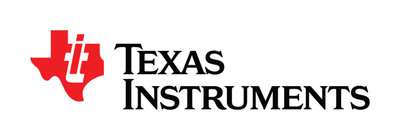CHENGDU, China, Oct. 14 /PRNewswire-FirstCall/ -- Texas Instruments Incorporated (NYSE: TXN) (TI) today announced its first wafer fabrication facility, or "fab," in China. This important milestone puts manufacturing close to the company's growing customer base there. Located in the Chengdu High-tech Zone (CDHT), which is considered by many to be China's next major technology hub, TI Chengdu will further expand TI's analog production capacity.
The fab is a fully equipped 200mm manufacturing facility and was purchased from Cension Semiconductor Manufacturing Company. It includes an operating 120,000-square- foot fab that can support more than $1 billion in annual revenue and a 134,000-square-foot fab reserved for future production needs.
"TI has been committed to serving the China market for 25 years," said Gregg Lowe, TI senior vice president for Analog. "Increasingly, customers there are using TI's analog chips for the real-world functions in their electronic applications. This fab in Chengdu will strengthen our ability to support customers' growing requirements and deliver analog products when and where customers need them."
This announcement follows TI manufacturing expansions in the U.S., Japan and Germany over the past 24 months.
For more information about TI delivery capacity and analog manufacturing investments, please see www.ti.com/chengdu-pr.
About Texas Instruments
Texas Instruments (NYSE: TXN) helps customers solve problems and develop new electronics that make the world smarter, healthier, safer, greener and more fun. A global semiconductor company, TI innovates through design, sales and manufacturing operations in more than 30 countries. For more information, go to www.ti.com.
Trademarks
All trademarks are the property of their respective owners.
TXN-C
Safe Harbor
Statements contained in this press release regarding the capability of acquired capacity to expand TI's Analog revenue, and other statements of management's beliefs, goals and expectations, are forward-looking statements intended to qualify for the safe harbor from liability established by the Private Securities Litigation Reform Act of 1995. All such forward-looking statements are subject to certain risks and uncertainties that could cause actual results to differ materially from those in forward-looking statements.
We urge you to carefully consider the following important factors that could cause actual results to differ materially from the expectations of TI or its management:
- Market demand for semiconductors, particularly in key markets such as communications, entertainment electronics and computing;
- TI's ability to maintain or improve profit margins, including its ability to utilize its manufacturing facilities at sufficient levels to cover its fixed operating costs, in an intensely competitive and cyclical industry;
- TI's ability to develop, manufacture and market innovative products in a rapidly changing technological environment;
- TI's ability to compete in products and prices in an intensely competitive industry;
- TI's ability to maintain and enforce a strong intellectual property portfolio and obtain needed licenses from third parties;
- Expiration of license agreements between TI and its patent licensees, and market conditions reducing royalty payments to TI;
- Economic, social and political conditions in the countries in which TI, its customers or its suppliers operate, including security risks, health conditions, possible disruptions in transportation networks and fluctuations in foreign currency exchange rates;
- Natural events such as severe weather and earthquakes in the locations in which TI, its customers or its suppliers operate;
- Availability and cost of raw materials, utilities, manufacturing equipment, third-party manufacturing services and manufacturing technology;
- Changes in the tax rate applicable to TI as the result of changes in tax law, the jurisdictions in which profits are determined to be earned and taxed, the outcome of tax audits and the ability to realize deferred tax assets;
- Changes in laws and regulations to which TI or its suppliers are or may become subject, such as those imposing fees or reporting or substitution costs relating to the discharge of emissions into the environment or the use of certain raw materials in our manufacturing processes;
- Losses or curtailments of purchases from key customers and the timing and amount of distributor and other customer inventory adjustments;
- Customer demand that differs from TI's forecasts;
- The financial impact of inadequate or excess TI inventory that results from demand that differs from projections;
- The ability of TI and its customers and suppliers to access their bank accounts and lines of credit or otherwise access the capital markets;
- Impairments of TI's non-financial assets;
- Product liability or warranty claims, claims based on epidemic or delivery failure or recalls by TI customers for a product containing a TI part;
- TI's ability to recruit and retain skilled personnel; and
- Timely implementation of new manufacturing technologies, installation of manufacturing equipment and the ability to obtain needed third-party foundry and assembly/test subcontract services.
For a more detailed discussion of these factors, see the Risk Factors discussion in Item 1A of TI's most recent Form 10-K filed with the U.S. Securities and Exchange Commission. The forward-looking statements included in this release are made only as of the date of this release, and TI undertakes no obligation to update the forward-looking statements to reflect subsequent events or circumstances.
SOURCE Texas Instruments Incorporated
